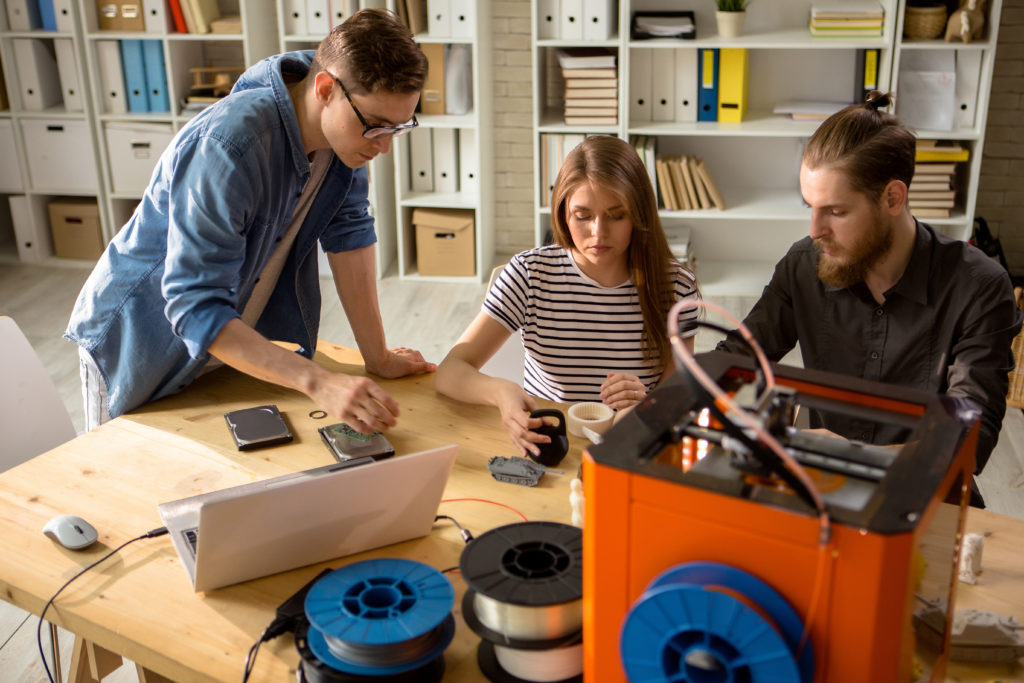
The additive manufacturing (AM) industry is growing rapidly, yet the industry is facing a global shortage of workers. The 2022 AM Salary Survey Report by Alexander Daniels Global estimated that in 2021, the AM sector had 8,261 job openings in the US. Manufacturing requires people, regardless of a company’s size, industry, or adoption of advanced technologies like robots, automation, and artificial intelligence.
ASME’s annual AM surveys for both the medical and aerospace sectors, consistently show the lack of individuals with the necessary skills and knowledge as one of the top three challenges facing the AM community.
Reducing the deficit of job openings in AM will be a challenge that can be met with multiple possible solutions. In the US, manufacturers are bringing work back stateside, requiring a larger labor market, yet advanced manufacturing is not attracting young talent like tech startups and social impact organizations. Research by Deloitte and the Manufacturing Institute estimates the manufacturing workforce shortage could grow more than 2.5-times the current deficit by 2030. For AM, this would mean more than 20,500 jobs unfilled in the US. For the entire manufacturing industry, this could mean more than 2.1 million jobs go unfilled.
To support the AM industry and grow the labor pool, the industry has to face two distinct challenges: 1) grow the workforce through new entrants into the industry, and 2) retain the current labor market.
Growing the AM Workforce
According to research by Zippia, 45% of manufacturing worker’s highest level of education is a high school diploma, signaling that a post-secondary education is not a requirement for many manufacturing positions. Zippia’s data comes from the US Bureau of Labor Statistics and resumes posted on its site. Many employers have the opportunity to grow their employment numbers by lowering barriers to entry like education and professional tenure.
Thus, high school graduates and those enrolled in career and technical education (CTE) programs, also known as trade schools, could be the best person for your job posting. Practical experience, like time working with a machine or post-processing 3D-printed parts, could be ideal, yet many entry-level positions do not require previous work in AM. For any level role, organizations should be looking for candidates who are motivated to learn.
Teaching AM is challenging, with many nuances across the different processes and materials. AdditiveManufacturing.com hosts a ‘basics’ page which provides a great way to understand the breadth of knowledge that may be needed. Organizations like ASME, AMT, ASTM International, SME, the Manufacturing Institute, America Makes, the New Collar Network and many more offer online courses for what could be considered an introductory AM course. Many look at short-form courses and certifications as a solution to train the entering workforce, however, little data has been collected on employment outcomes for graduates. From personal experience, these courses do not uniformly increase a worker’s readiness for an entry-level job. They can provide theory and teach the vocabulary of AM, yet the hands-on work required for most jobs cannot be taught on a computer.
Short-form certificates can help attract workers to AM, yet they will likely not be the solution to grow the workforce. Employers should hire widely and break down barriers to entry. On a manufacturing facility tour outside of Denver, Colorado for Manufacturing Day, a Vice President of Operations said, “I need people who will show up for work. We can train them here.”

Retaining the AM Workforce
Once an individual has entered the AM workforce, it can be challenging to keep them at a company. Of those surveyed for the 2022 AM Salary Survey Report by Alexander Daniels Global, 49% of respondents said they are “likely” or “extremely likely” to change jobs within the next 12 months. Neil Orringer, President and Co-Founder of ASTRO America said about the workforce challenge in the AM Voices, powered by ASME podcast, “It is not just building a workforce from scratch, there is also a retraining aspect.”
Retention is a major challenge for companies and studies are repeatedly finding the motivators for individuals to change their jobs are career progression, increasing monetary compensation, and flexibility. Both the 2022 AM Salary Survey Report, and the 2022 Great Attrition, Great Attraction 2.0 study from McKinsey, found the highest reason for someone to change jobs was to progress their career.
An individual’s growth in the workplace does not inherently mean climbing the hierarchical ladder within a company. Career progression means working toward what that individual considers a “better job.” In some cases, short-form courses and certifications could be a helpful way to help individuals with career mobility. For others it can be learning a new skill on the job to become a programer, designer, or manager. Nobody has a one-size-fits-all solution to retain employees because the workforce is a collection of individuals. The best advice is to talk with your workers on an individual basis and ask about their goals are, validate their opinions, and support them to reach their goals.
The AM industry requires people to continue to progress and all ships rise with the tide. To make an impact on our industry, we as a community need to collectively look at how to grow the talent pool and retain employees once they are in the workforce efficiently and effectively. The impact of a job in AM goes beyond supporting the company’s bottom line, it impacts individuals, families, and local communities.


